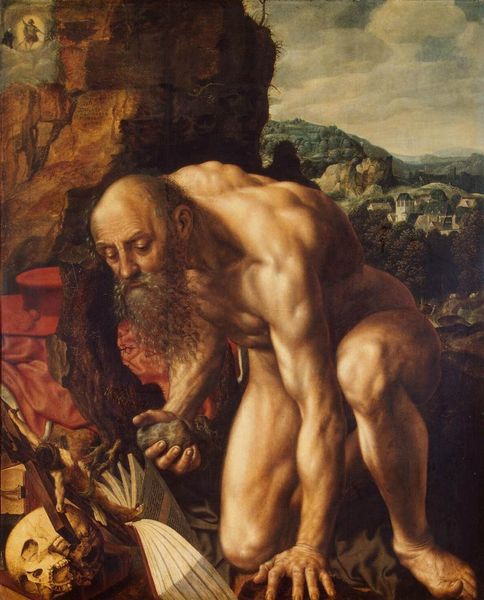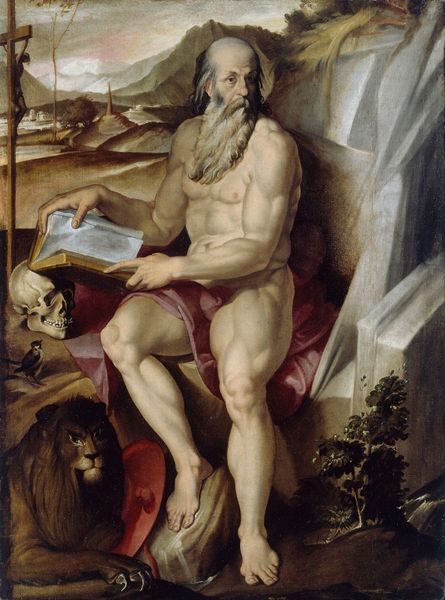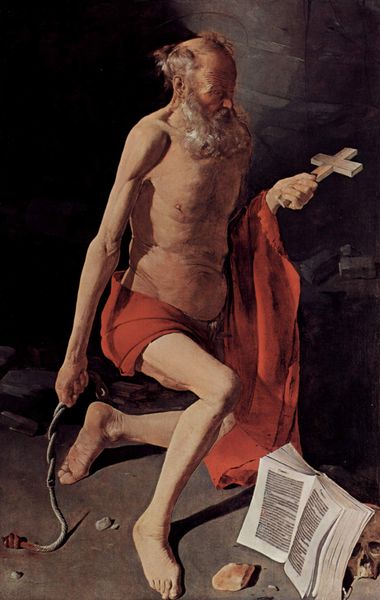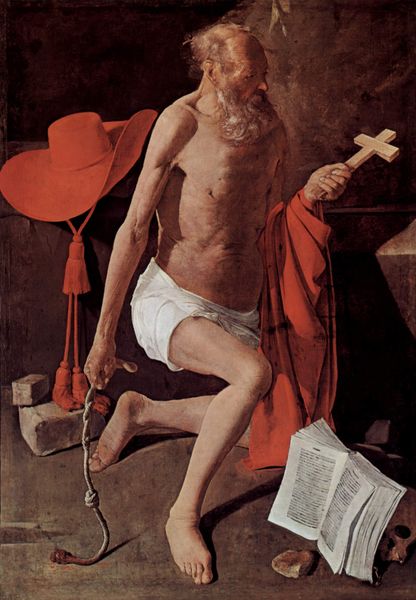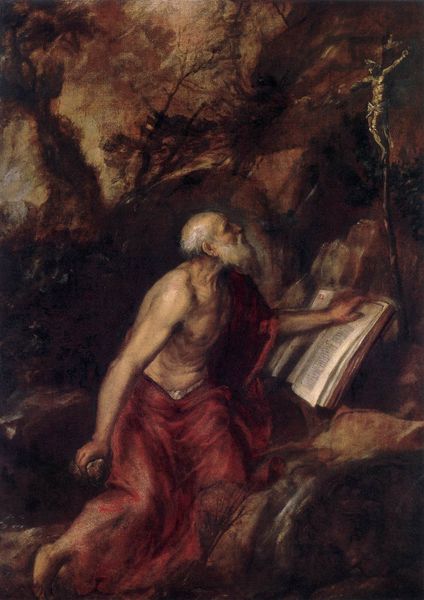
painting, oil-paint
#
portrait
#
baroque
#
painting
#
oil-paint
#
figuration
#
oil painting
#
christianity
#
history-painting
#
italian-renaissance
#
portrait art
Dimensions: 238 x 278 cm
Copyright: Public domain
Curator: Ah, "St Jerome," painted in 1635 by Guido Reni, residing at the Kunsthistorisches Museum in Vienna. What strikes you first about it? Editor: Rawness. The lean physicality of Jerome, almost brutal in its depiction. You see the marks of time and austerity etched into him. The painting has a tactile feel about how the red cloak contrasts the grey of the stone; I want to feel those surfaces. Curator: It’s more than mere representation. Reni uses the figure of St. Jerome to evoke profound concepts. Look at his upward gaze – a channeling of divine inspiration, aided by that angelic figure at his side. This references Jerome’s dedication to translating the Bible. Editor: True, but how was it made? Reni would've built this image layer by layer, through pigment and labour. We can appreciate Reni's skill, but should also consider the material extraction required to grind down those vibrant reds, for example. Curator: That very red symbolizes martyrdom, devotion and divine love in this context. Jerome’s placement within the cave – it suggests a spiritual removal, a dedicated isolation required to achieve insight, as a historical interpretation. Editor: See the labor! Imagine grinding minerals into a usable pigment. The book too: the material support on which this spirituality hangs, created through animal skin and countless hours of scribal labour. Its presence makes it far from an immaterial representation. Curator: You are grounding something celestial into base materiality! But his actions here carry so much cultural and emotional meaning. What emerges for me, especially now, is how history filters through visual depictions like this. St Jerome represents erudition, hermitage and commitment – but what kind of labor was dedicated to these translations? Reni represents these considerations effectively within his oeuvre. Editor: Indeed. This piece reveals so much of not only its subject, but Reni’s method and materials used. Ultimately the cultural significance depends heavily on this tangible, built world, even as it gestures beyond it.
Comments
No comments
Be the first to comment and join the conversation on the ultimate creative platform.
